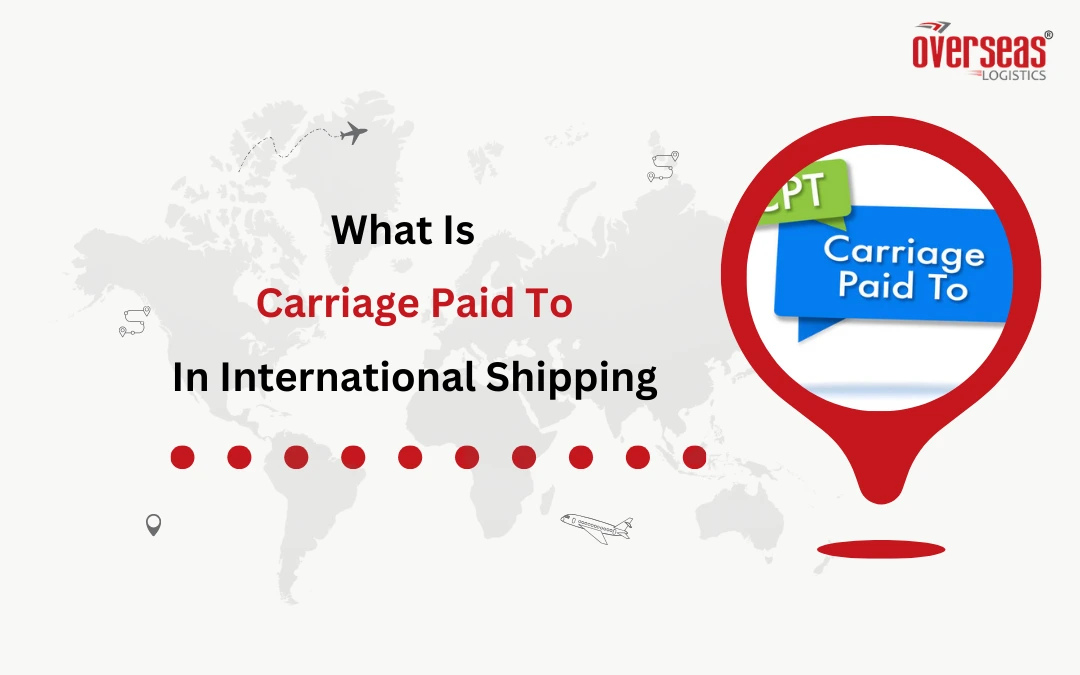In the era of international trade, the term ‘Carriage Paid To’ (CPT) serves as a linchpin for numerous e-commerce enterprises. Mastering the intricacies of CPT is not merely a choice; it is the strategic differentiator between triumph and stagnation. This article is a compass through the labyrinth of CPT in international logistics, dissecting its meaning, unraveling seller and buyer responsibilities, and offering insights to elevate your eCommerce venture.
Understanding Carriage Paid To (CPT) in Logistics
CPT symbolizes a commitment wherein the seller shoulders the financial burden and risk associated with ferrying goods to a predetermined destination outlined in the sales contract. This destination could be a port, warehouse, or any agreed-upon location. The seller’s obligations span a spectrum, from meticulous export packaging to navigating terminal charges, all essential cogs in the machinery of international courier services.
Seller’s Responsibilities in the CPT Agreement
1. Export Packaging
In the era of CPT agreements, export packaging isn’t a perfunctory task; it’s an adherence to stringent international standards. The seller’s responsibility lies in choosing materials and methods tailored to the goods and chosen transportation mode, ensuring safety and durability during transit.
2. Loading Charges
Crucial for sellers, loading charges involve the financial coverage of loading goods onto the vehicle. This demands seamless coordination with loading facilities, a testament to the seller’s commitment to smooth logistics operations.
3. Delivery to Port/Place
Selecting reliable and cost-effective transportation services is the seller’s forte. Foresight and planning come into play, ensuring goods embark on their journey under optimal conditions, with an additional necessity for an export-import code for cross-border trade.
4. Origin Terminal Handling Charges (OTHC)
Managing costs at the shipping terminal’s point of origin is a significant facet of the seller’s responsibilities under CPT. A nuanced understanding of OTHC ensures the seamless initiation of the logistical journey.
5. Loading on Carriage
Beyond loading, the seller’s responsibilities extend to ensuring that the handling process during the goods’ carriage is conducted without inflicting damage. It’s a meticulous dance of managing expenses and preserving product integrity.
6. Freight Charges
Timely and accurate payment of freight forwarding charges is pivotal. Calculated based on weight, volume, and distance, prompt payment is the linchpin for uninterrupted transit and adherence to delivery schedules.
7. Destination Terminal Handling Charges (DTHC)
In a CPT agreement, the seller shoulders the responsibility of handling destination terminal charges, and ensuring the smooth flow of operations at the terminal in the destination country.
Buyer’s Responsibilities in the CPT Agreement
1. Insurance
Upon handover, the buyer assumes the mantle of ensuring cargo safety. Shipping insurance isn’t a choice but a necessity, demanding a meticulous selection based on cargo value and inherent risk factors.
2. Delivery to Destination
Managing logistics from the destination port to the final destination falls under the buyer’s purview. Meticulous planning and coordination with inland transportation services are imperative to align with shipment requirements and delivery timelines.
3. Unloading at Destination
Unloading goods at the destination demands an understanding of associated costs, hiring local handling services, and ensuring efficient, damage-free unloading—a testament to the buyer’s commitment to the integrity of the received goods.
4. Import Duty, Taxes, and Customs Clearance
Buyers must be well-versed in the import duties and taxes applicable, ensuring financial obligations are met for a smooth entry into the destination country.
Conclusion
Optimising CPT in eCommerce supply chains requires a delicate balance of leveraging benefits and mitigating risks. A profound understanding of the incoterm and the broader logistics environment is paramount. For businesses lacking this privilege, harnessing the expertise of logistics platforms like Overseas Logistics becomes a strategic move, providing assets like reduced shipping costs, real-time tracking, and access to the best international courier services.
FAQs
Which is better, CIP or CIF?
In the CIP vs. CIF debate, the choice hinges on factors like multi-modal transport requirements and buyer control. CIP suits multi-modal needs, while CIF is preferable for sea shipments prioritizing logistics chain security.
What is Carriage Insurance Paid To?
Carriage and Insurance Paid To (CIP) is an agreement where the seller covers the cost of freight and insurance for goods up to an agreed-upon location.
Who pays for insurance in Incoterms?
Depending on the incoterm used, either the seller or buyer bears insurance responsibility for the goods during transit.

